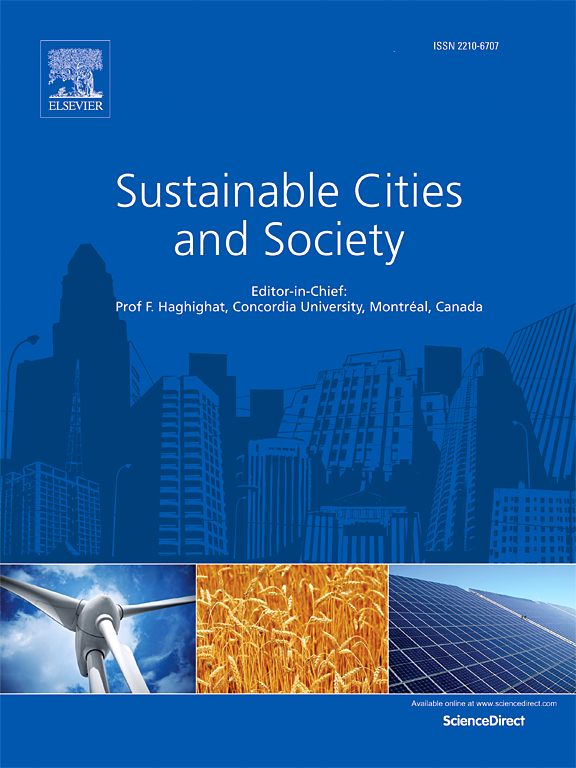Study on the heat and moisture coupling transfer characteristics with surrounding rock in subway tunnel under fluctuation boundary condition
IF 10.5
1区 工程技术
Q1 CONSTRUCTION & BUILDING TECHNOLOGY
引用次数: 0
Abstract
The study of heat storage performance in the surrounding rock and heat transfer between it and the air within the subway tunnel was of significance to the thermal environment. However, most researches ignored the impact of humidity. In this study, a mathematical model coupled heat and moisture transfer was established considering the piston wind. The interannual variation of moisture and heat transfer was explored under the influence of periodic fluctuations. Simultaneously, the characteristics of moisture and heat reservoirs across various regions were analyzed. It has been revealed that the coupled moisture and heat transfer in surrounding rock influenced by the piston winds, which plays an important role in the subway tunnels. The moisture flux on the wall surface increased by 1.6 times when the piston effect was taken into account, and the heat flux increased by 1.15 times. The consideration of heat and moisture coupling lead to a 17 % expansion of the surrounding rock's heat circle in 30 days and a 19.3 % expansion in 365 days, respectively. Under the boundary condition of cyclic fluctuating temperature and relative humidity, the temperature and moisture of the rock in the interval tunnels exhibited interannual fluctuations, and then reached a state of dynamic equilibrium.
求助全文
约1分钟内获得全文
求助全文
来源期刊

Sustainable Cities and Society
Social Sciences-Geography, Planning and Development
CiteScore
22.00
自引率
13.70%
发文量
810
审稿时长
27 days
期刊介绍:
Sustainable Cities and Society (SCS) is an international journal that focuses on fundamental and applied research to promote environmentally sustainable and socially resilient cities. The journal welcomes cross-cutting, multi-disciplinary research in various areas, including:
1. Smart cities and resilient environments;
2. Alternative/clean energy sources, energy distribution, distributed energy generation, and energy demand reduction/management;
3. Monitoring and improving air quality in built environment and cities (e.g., healthy built environment and air quality management);
4. Energy efficient, low/zero carbon, and green buildings/communities;
5. Climate change mitigation and adaptation in urban environments;
6. Green infrastructure and BMPs;
7. Environmental Footprint accounting and management;
8. Urban agriculture and forestry;
9. ICT, smart grid and intelligent infrastructure;
10. Urban design/planning, regulations, legislation, certification, economics, and policy;
11. Social aspects, impacts and resiliency of cities;
12. Behavior monitoring, analysis and change within urban communities;
13. Health monitoring and improvement;
14. Nexus issues related to sustainable cities and societies;
15. Smart city governance;
16. Decision Support Systems for trade-off and uncertainty analysis for improved management of cities and society;
17. Big data, machine learning, and artificial intelligence applications and case studies;
18. Critical infrastructure protection, including security, privacy, forensics, and reliability issues of cyber-physical systems.
19. Water footprint reduction and urban water distribution, harvesting, treatment, reuse and management;
20. Waste reduction and recycling;
21. Wastewater collection, treatment and recycling;
22. Smart, clean and healthy transportation systems and infrastructure;
 求助内容:
求助内容: 应助结果提醒方式:
应助结果提醒方式:


